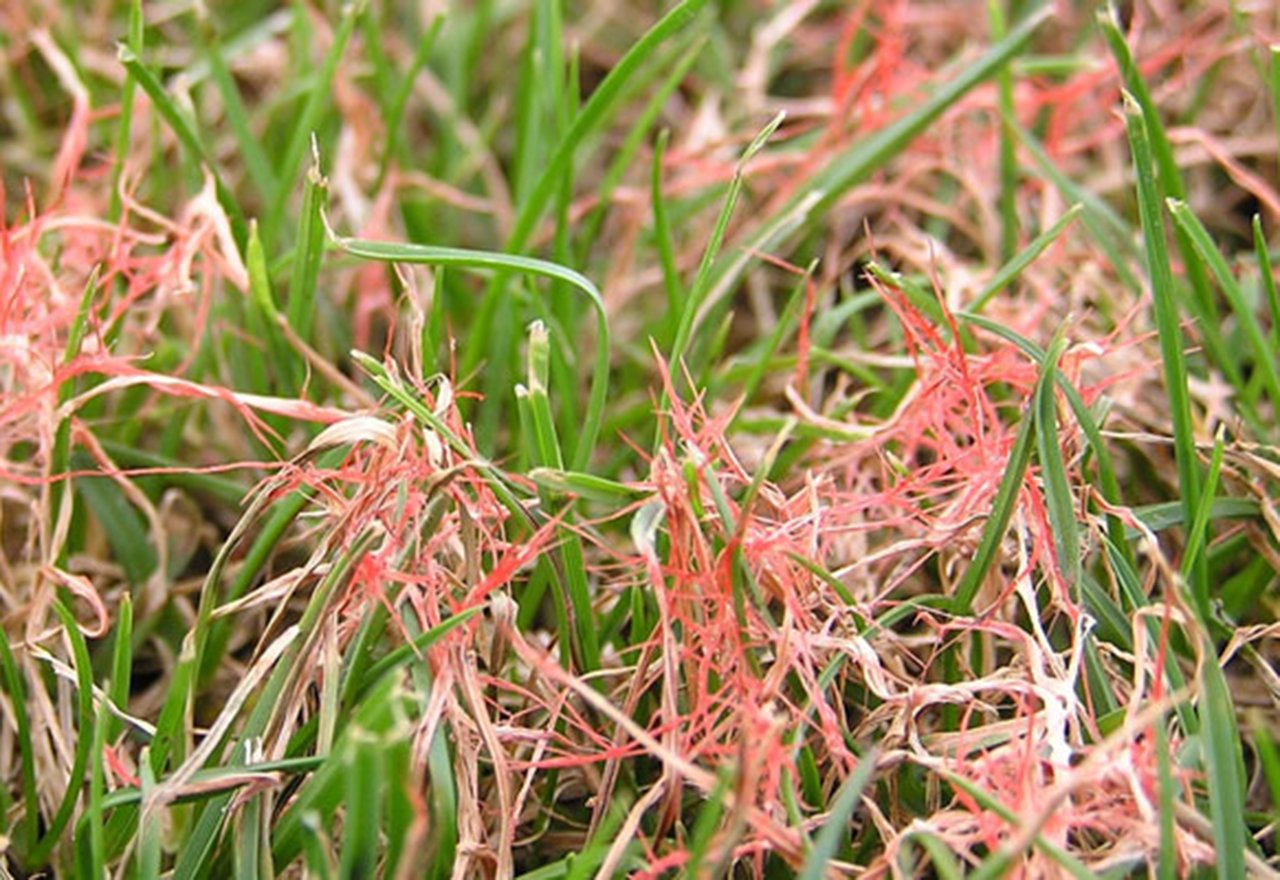
Hello! Hope your week is going well. Today we are going to continue with our series about lawn diseases with a look at Red Thread lawn disease. This will help you with understanding it and know what to do and how to prevent it.
If your lawn has what looks like dying spots that have reddish or pink fibers on them, this could be Red thread. This turfgrass disease is usually caused by environmental stress or low soil nitrogen levels.
Grasses Susceptible to Red Thread
The grasses that are most susceptible are the cool-season grasses. Common grass varieties are bentgrass, Kentucky bluegrass, red fescue, and ryegrass. The warm-season grasses usually are resistant to the problem of red thread.
Will It Kill My Grass?
Even though the areas that are affected look like they’re dead, the disease won’t kill your grass. This fungus which affects the grass lives in soil and the thatch and it can spread by mowing, plant material that is dead and infected, and other types of mechanical maintenance. The growths appearing on y our grass won’t affect its roots or crown, so the fungus doesn’t kill it.
Conditions Red Grass Loves
It occurs in a lot of different climates. However, it’s much more common in those areas with high humidity or rainfall during the late spring or the summer. Those primary conditions that Red Thread love are:
- Excessive grass travel
- High humidity
- Inadequate fertilization overall
- Low levels of light
- Low nitrogen levels
- Temperatures from 68-75 degrees
How to Identify Red Thread
Red Thread’s caused by a fungus known as Laetisaria fuciformis. It looks like thread-like branches that are pink or red in color, and sometimes it’s compared to the appearance of antlers. Grass will be light brown or tan under these growths.
It’s often confused with something known as pink patch. This is a disease caused by something called Limonomyces roseipellis. This disease is different but resembles red thread in its disease cycle, host range, epidemiology, appearance, and symptoms.
Why Red Thread May Affect Your Lawn
Just about any lawn’s susceptible. However, it isn’t uncommon for one lawn to be affected more than a neighboring property. This is because of various water patterns, maintenance, and different conditions in the soil.
You can understand why turf diseases such as red thread by looking at just three factors, and these make up the disease triangle.
- The host
- The disease or pathogen
- The favorable environment for the disease to grow
The host is a grass plant that lacks nitrogen and isn’t growing as fast as compared with other months. The pathogen’s present in your lawn’s thatch layer, and it’s impossible to remove completely. When a plant’s week and the relative humidity and temperature are ideal for the fungus to grow, you’ll see reed thread appearing and growing.
How to Treat Red Thread
If you are having issues with red thread, chances are that you are wondering what you can do to fight it. The way to do this is to disrupt the triangle we discussed above so that you stop the fungus from growing. Since you aren’t able to control weather or remove that pathogen completely, it’s best to address the plant and make it stronger using fertilizer.
Basically, you want to fertilize your lawn using the right nitrogen amount with an ongoing program of feeding your lawn. When nitrogen is applied to your lawn during the fall, it will nourish your turf when it reemerges in the spring. However, you want to be careful so that you aren’t overstimulating late-season growth. It could take 2+ of feeding your lawn carefully so that red thread is prevented from returning in springtime.
Another way that you can control it is to avoid keeping your grass wet for long periods of time. You should irrigate it during the hours of 12-6 am. Make sure that you give the lawn enough water so that the whole root zone is wet. Don’t water the lawn again until your grass is showing drought stress signs.
Prune your shrubs and trees or remove them to increase air movement and sunlight. You should also bag the clippings from the affected areas when red thread’s active and thoroughly clean your mowing equipment in between uses so that the disease spread is reduced.
It’s generally not necessary to treat it using chemicals, and it’s not a good idea for a residential lawn. You should only use fungicide for an extreme infestation and only when nothing else is working.
If you are worried about Red Thread or want to know more about keeping your lawn healthy, why not contact us? We offer a variety of lawn maintenance services, and we’ll be happy to give you a no-obligation quote. Also, be sure to follow us on Facebook.


